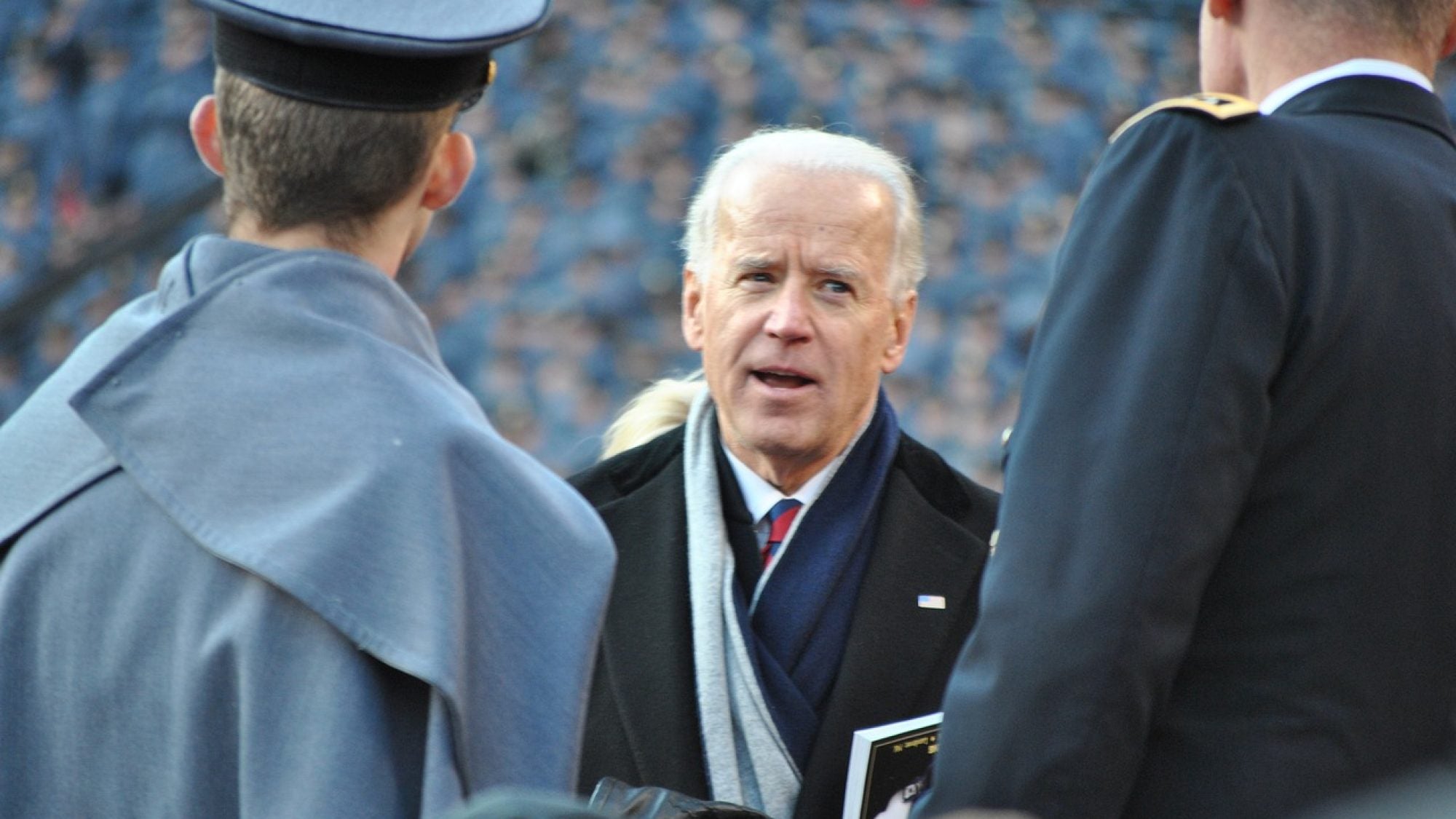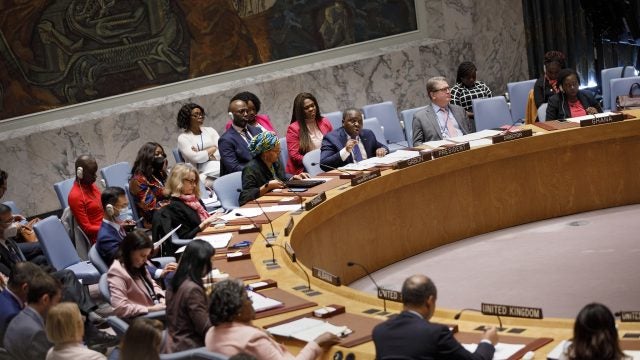
Title: President Biden’s Yemen Policy: From Pronouncements to Peace?
The Biden administration is pursuing a plan to end the war in Yemen through diplomacy. Peace is essential for a country that has witnessed over a half-decade of battles, bombings, and blockades. Even though the United States has withdrawn support for offensive operations in the country, it should still assist regional partners to address Houthi aggression, talk with all relevant actors, and contribute to effective humanitarian aid.
President Biden often repeats a foreign policy refrain: “Diplomacy is back.” On February 4, he declared an end to “all American support for offensive operations in the war in Yemen, including relevant arms sales.” He also emphasized the work of USAID and appointed a special envoy to the conflict. These steps can help mitigate the country’s myriad of proxy wars, worsening humanitarian crisis, and lingering state fracture. However, America’s strategic partnership with Saudi Arabia, persistent tensions with Iran and its aligned groups, and the conflict’s complexities will strain Biden’s ambitions.
Yemen’s current conflict stems primarily from the precarity of its post-Arab Spring politics. In February 2012, President Abdu Rabbu Mansour Hadi succeeded longtime leader Ali Abdullah Saleh in a Gulf Cooperation Council-brokered agreement. Following a national dialogue, Hadi proposed a six-region federation. This plan was rejected by both Southern secessionists and Ansar Allah, a Zaydi Shia armed group from northern Yemen called the Houthis that clashed with Saleh in the 2000s and Saudi Arabia in late 2009. Exploiting Hadi’s political weakness, the Houthis stormed Sana’a in September 2014, gained control of the city the following February, and gradually aligned with Saleh until they killed him in December 2017 after he hinted at rapprochement with the Saudis.
The United States has been involved in each of what Gregory Johnsen terms “Yemen’s Three Wars.” First, America was a party to the war’s regionalization. The Obama administration largely greenlit a March 2015 Saudi Arabian-led intervention to support Hadi. The multilateral coalition has withered, failed to defeat the Houthis, and has been marked by catastrophic bombings and crippling blockades. Both presidents Obama and Trump supported the coalition with material and intelligence assistance, and many Biden advisers are veterans of the Obama White House. Furthermore, the United States supports Hadi amid the ongoing civil war with the Houthis. Finally, the United States—often along the United Arab Emirates (UAE)—has conducted counterterrorism against al-Qaeda in the Arabian Peninsula (AQAP).
How can President Biden link his February pronouncements with policies conducive for lasting peace? Three priorities confront the Biden administration as the United States reverses from an offensive posture: deterring Houthi attacks, devising a political solution, and distributing economic aid.
Preventing Houthi Aggression
The Houthis have proven resilient against Saudi coercion, intransigent toward United Nations negotiations, and persistent in their quest to expand. In early February, they relaunched an offensive on Marib, central Yemen. The oil-rich governorate has remained relatively stable during the conflict, and its capital city hosts about one million displaced persons. Local tribes, coalition personnel, and Hadi government forces defend Marib. As of mid-March, the Houthis have been unable to breach Marib City, and the western front remains a stalemate.
The United States has primarily offered middling responses to Houthi aggression. On February 16, State Department spokesperson Ned Price urged the group to halt their advance, and on March 2, the United States applied sanctions on two of its leaders. American officials rightly decry the most draconian and repressive aspects of Houthi rule. Nonetheless, press releases will not prevent their aggression because every international actor, except for Iran, lacks leverage over the group. Houthi rhetoric and resources demonstrate that the group has a years-long link to Tehran. One way to create leverage is for US-Iran nuclear negotiations to address Iranian patronage of the Houthis. The foremost aspects of this support are maritime and land arms transfers that the United States may further interdict through multilateral means. Finally, the United States can encourage Saudi-led coalition forces to repel the Houthi attack on Marib.
Promoting Healthy Dialogue
Timothy Lenderking, the newly appointed US Special Envoy for Yemen, is off to a strong start. Oman, a country known for its diplomatic acumen, reportedly facilitated the envoy’s first direct contact between the United States and the Houthis on February 26. While this is an important step toward the US’s planned nationwide cease-fire, simply brokering talks between the Houthis and Hadi is not sufficient to address Yemen’s fractures. The conflict is more than the Houthi-Hadi fronts in Hajjah, Marib, and Taiz that encompass the northern, eastern, and southern reaches of historic North Yemen.
Another facet relates to the governorates that comprise historic South Yemen, which existed from 1967–1990. There, disparate groups have varying ambitions for autonomy. The Southern Transitional Council (STC), an Emirati-backed group established in May 2017, administers large portions of Aden and adjacent governorates and holds a tenuous power-sharing agreement with Hadi. STC leader Aidarus al-Zoubaidi recently called for a referendum on independence and STC representation at UN talks. Although a referendum is not logistically feasible now, the lack of Southern voices in talks is a consequential oversight. This is especially true given the STC’s important role in the Southern Movement and its persistent tensions with Hadi, who resides in Riyadh, has little legitimacy inside Yemen, and relies on deputies in parts of Aden, Marib, and Hadramawt for governance. While the United States must not accept a hasty partition, talking to the STC is important since the future structure of Yemen may very well be a decentralized federation.
Providing Humanitarian Assistance
Millions of Yemeni citizens and residents face malnutrition, illnesses, and poverty. In an attempt to ease the flow of aid to the north, the Biden administration reversed Trump’s last-minute designation of the Houthis as a Foreign Terrorist Organization. In early March, the US pledged $191 million in aid, bringing the Fiscal Year 2021 total to $350 million. This represents a small portion of the $1.7 billion collectively pledged last month, and falls well short of the UN’s $3.85 billion goal. There is some cause for hope given that US officials recently announced that USAID assistance is slated to reach Houthi-controlled areas. However, one-time distributions of food or medicine will do little to assist Yemenis in purchasing goods and services for their households.
David Harden and Abdulrahman al-Eryani recently proposed a two-step economic strategy: first, increase commodity supply by opening all ports, especially al-Hudaydah Port on the Red Sea coast and Sana’a International Airport, and second, stabilize Yemen’s inflated currency. The first step is possible, given the latest cease-fire proposal announced by Saudi Arabia on March 22. However, the Houthis asserted that the proposal amounts to nothing new, the Saudi stance is that “the onus is on the Houthis,” and previous efforts for cease-fires have failed to last. The latter step to consolidate and prop up Yemen’s banking sector, assist its agricultural sector, and improve household purchasing power are actionable and effective steps for the United States to take. This is especially true given Yemen’s frequent salary delays, expansive war profiteering, and even the bifurcation of the Central Bank.
The Steps Ahead
President Biden has pledged to extricate the United States from the war in Yemen. The conflict is tragic not only from a geostrategic perspective, but also in light of the immense suffering of migrants and Yemeni civilians, imperiling of the country’s vast cultural heritage, and damage to its ecological diversity. Crafting a sustainable peace has been a years-long imperative which has been frustratingly far from actualization.
The United States should not be mired in Yemen, but it must not abandon the country altogether. The most-immediate priority for the United States should be doing what it can to prevent a Houthi takeover of Marib. Additionally, given reports that protestors stormed the seat of Yemen’s internationally-recognized government in Aden on March 16, American officials need a sharper sense of events in southern Yemen. Finally, the United States should continue to provide and promote humanitarian aid as international donations fall short. In all, Biden will face a difficult balancing act between Gulf partners, regional adversaries, and myriad Yemeni actors with conflicting visions for their future.
. . .
Tyler B. Parker is a PhD student in International Politics at Boston College and he tweets @Tyler_B_Parker.
Image Credit: Pixabay (via Creative Commons)
Recommended Articles

This article explores the uncertain future of Arctic governance amid shifting global geopolitics. It argues that whether Washington and Moscow opt for confrontation or cooperation, multilateralism in the Arctic…

Twenty-five years ago, the United Nations Security Council adopted Resolution 1325, establishing a framework that underpins the Women, Peace, and Security (WPS) Agenda. The Resolution recognized both the…

When we analyze conflicts in the Middle East, we are not analyzing conflicts with isolated impacts but risks for global energy security. Recent conflicts in the Middle East have highlighted…